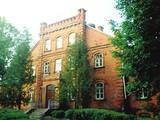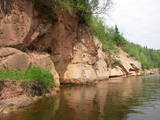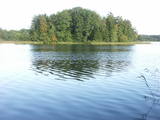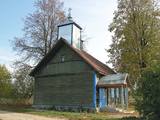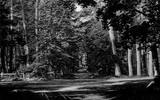| Nr | Nosaukums | Apraksts |
|---|---|---|
|
Salos, Vaišnoriškė, Strazdai, Šuminai – Augštaitijas nacionālā parka ciemi, kuros saglabājušas vēsturiskas viensētas ar koka ēkām un to plānojumu. Apdzīvoti. |
||
|
Progresīvā bioloģiskā saimniecība audzē ap 50 dažādus bioloģiskos dārzeņus un zaļumus. Lauksaimniekiem pieder 10 hektāri zemes, kur viņi audzē no seniem laikiem Biržu reģionā izplatītus dažādu sugu āra un siltumnīcu dārzeņus. |
||
|
Viens no Latvijas Kultūras fonda kopas ‘’Pūdnīku skūla’’ dalībniekiem, kas pielieto senās un gadsimtos pārbaudītās Latgales podniecības metodes. Piedāvā darbnīcas apskati, dalību cepļa atvēršanā, iespēju darboties pašiem un keramikas darbu pasūtīšanu un iegādi. |
||
|
Nakšņošana lauku mājā līdz pat 40 personām (ar papildvietām). Pirts un pirtnieka pakalpojumi, svinību telpa, atpūta dabā – peldvieta dīķos, makšķerēšana, sporta un atpūtas laukumi. Saimnieki piedāvā nobaudīt žāvētas zivis vai zivju zupu, arī no Jūsu pašu iegūtā loma. Makšķerēšanai ir pieejami 17 zivju dīķi. "Paradīzēs" ir iespējams rīkot arī svētku svinēšanu brīvā dabā, kā arī nakšņot teltīs. Viesošanās Viesu namā "Paradīzes" iepriekš obligāti ir jāpiesaka! |
||
|
Pāvilostā ir trīs parki. Pāvilostas centrā (pie kultūras nama) atrodas Piecdesmitgades parks, kuru 1929. g. iekopa skolotājs un novadpētnieks Ernests Šneiders. Vienu ozolu tajā esot iestādījis Latvijas Valsts prezidents Gustavs Zemgals. Simtgades parks ar piemiņas akmeņiem tapa Sakas labajā krastā jau kā turpinājums iesāktajam. Vecākais no Pāvilostas parkiem - Upesmuižas parks (19. gs.) atrodas tuvu Liepājas – Ventspils šosejai. Upesmuižas pils nav saglabājusies (nodedzināta 1905. g.). Parkā apskatāms sens akmens sols (perimetrs 5,55 m) un Upesmuižas parka Lielais akmens. Domājams, tas ir kultakmens. |
||
|
Rikavas muiža – valsts nozīmes vēstures piemineklis, sākotnēji
piederēja muižnieku Janovsku dzimtai. 18. gs. 2. pusē to nopirka poļu
muižnieks Mihals Riks. Muižas kungu māja celta no 1870. līdz 1875. gadam
neogotikas stilā no sarkaniem ķieģeļiem, kas iegūti Rikavā. Kopš
1926. gada tajā atrodas skola. Iekštelpās saglabājušās greznas koka
kāpnes un sākotnējo interjeru apdares fragmenti. Muižas pārvaldnieka
mājā iekārtota skolas darbnīca.
|
||
|
Medus meistari iepazīstinās ar savu biškopības saimniecību un biškopja ikdienas pienākumiem. Iespējams nogaršot un līdzņemšanai iegādāties medu, kā arī dažādus medus maisījumus, papildus saņemot auksti žāvētas ogas. |
||
|
The farm on the banks of the River Navesti is Estonia's largest company engaged in the cultivation and processing of organic medicinal herbs. The farm has an education and health path of medicinal herbs, open from May to September. Farm has a tea house completed in 2010 which is suitable for holding seminars, relaxing and in the summertime also for having meals. Herb presentations are held there - first on the field and then in the tea house. There is also a 13-metre viewing tower by the river from which you can get a good overview of the lands of the farm. Energy Farm also offers accomodation and Eco-Spa with sauna. |
||
|
Viens no iespaidīgākajiem un varenākajiem Gaujas Devona perioda smilšakmens atsegumiem. Garums ~500 m, augstums - 43 m. Iepretim atrodas Ķūķu krāces. |
||
|
Atrodas 0,3 km ziemeļos no Vecpiebalgas pilsdrupām. Ap 10 m augsto, bet visnotaļ izteiksmīgo Grišku kalnu sauc arī par Piebalgas, Balgas un Veļķu pilskalnu. 13. gs. šeit bijusi svarīga apmetnes vieta ar mākslīgi nostāvinātām nogāzēm un dziļu aizsarggrāvi. Vēstures notikumi ir atstājuši ap metru biezu kultūrslāni. Bezlapu laikā no kalna paveras skats uz Vecpiebalgas baznīcu un pilsdrupu vietu. Pilskalna piekājē ir aka ar Griškavotu. |
||
|
„Strauti” atrodas Embūtes pauguraines austrumu malā. No dienvidiem tos ieskauj plaši mežu masīvi, kuros mīt daudzi Latvijas savvaļā sastopamie dzīvnieki. Blakus saimniecībai atrodas bijušās putnu fermas korpusi. Saimniecībā audzē vaislas trušus, aitas, dažādu šķirņu mājputnus, divus zirgus un poniju. Saimniecības laukos ganās govju ganāmpulks, kurā starp dažādu šķirņu govīm apskatāmas arī Latvijas Zilās govis. Saimniece piedāvā ekskursijas skolēnu grupām un citiem interesentiem. Iepriekš vienojoties, iespējama trušu gaļas, aitas vilnas, kā arī saimniecībā izaudzēto dārzeņu iegāde. Bioloģiskā saimniecība. |
||
|
Vijciema Medību pils ēkā iekārtots elegants dizaina viesu nams Bergervilla. Katrs numurs ir ar individuāli veidotu dizainu, vēsturiskām mēbelēm un īpašu atmosfēru. Pieejami 4 numuri – standarta numurs, divu istabu apartaments un divi Delux klases numuri ar privātu balkonu un vannu. Katram numuram dots meža zvēra vai putna vārds – Pūce, Mednis, Briedis un Alnis. Viesu atpūtai tāpat pieejama viesistaba un bibliotēka, kā arī pilnībā aprīkota virtuve maltīšu pagatavošanai. Pieejams bezmaksas Wi-Fi un autostāvvieta. |
||
|
Dzirnavu restorāns Saaremaa ir sāremiešu iecienīto garšu restorāns, kur piedāvā visu to labāko un svaigāko. Ēdienkartē atrodama medījumu gaļa no Saaremaa mežiem, vasarā arī kūpinātas zivis, našķi no ogām, vietējo ābolu vīns, kā arī labākie Saaremaa salas vīni. |
||
|
Vidzemes augstienes centrālajā daļā esošā Jumurdas ezera, tā trīs salu ar platlapju mežiem un ainavas aizsardzības nolūkos veidots dabas liegums. Lieguma teritorija labi pārskatāma no Jumurdas muižas puses un no lieguma dienvidos esošo pauguru augstākajām daļām.
|
||
|
Pļuskovas vecticībnieku kopienas lūgšanu nams celts 20. gs.
sākumā.
|
||
|
Krodziņš "Rančo" atrodas Rīgas - Liepājas šosejas 136. kilometrā, un saviem apmeklētājiem piedāvā gardus ēdienus un omulīgu atmosfēru. Ēdienkartē iekļauti latviskie ēdieni, ir iespējams pasūtīt banketus. Latviešu virtuve: Skābu kāpostu zupa, skābeņu biezzupa, aukstā zupa, asinsdesa, pelēkie zirņi ar speķi, siļķe ar biezpienu un kartupeļiem, kartupeļu pankūkas, plānās pankūkas. |
||
|
Atrodas t.s. Katoļu kvartālā starp Liepājas, Baznīcas, Tirgus un Raiņa ielām. Dievnams celts 1640. – 1642. g. kā Kurzemes hercoga Jēkaba Ketlera uzticības apliecinājums Polijas karalim. Tajā saglabājies biktssols ar alegoriskiem gleznojumiem (1691. g.), trīs ar rokoko stilā veidotiem kokgriezumiem rotāti altāri, 16. gs. skulptūra “Madonna ar bērnu” u.c. Iepriekš piesakoties, baznīcu var apskatīt arī no iekšpuses. |
||
|
Atrodas 4,5 km ziemeļos no Rīgas – Daugavpils šosejas (A 6), klajā laukā (ap 3 m augsts, ainavisks). Viens no izcilākajiem Latvijas muldakmeņiem, tādēļ ir vērts izmest kādu loku. Akmens augšdaļā ir iekalts gandrīz 2 m garš un ~ 20 cm dziļš muldveida iedobums. Atrodamas ziņas, ka vēl 19. gs. vidū pie akmens ir ziedots ēdiens, monētas u.c. priekšmeti. Pie tā dedzināti ugunskuri un svinēti svētki. Teikas vēsta, ka velns muldā lējis ūdeni un gribējis mīcīt mīklu, kā arī parāvis zem akmens tuvējo māju saimnieku. |
||
|
Līdz ar kūrorta Neibāde izveidi 1823. gadā, aizsākās rūpes par viesu atpūtu. Parku, kas veidots angļu stilā, radīja dārznieks Akerbergs, kuru barons Augusts fon Pistolkorss atveda no Igaunijas. 20.gadsimta 20.-30. gados Pēterupes – Neibādes jūrmalas palīdzības un labierīcības biedrība rūpējās par karā nopostītā kūrorta pieminekļa un parka rūpīgu atjaunošanu un kopšanu, Saulkrastu izdaiļošanu, organizēja sarīkojumus, nodibināja teātri un kori, kuru vadīja Olga Cīrule. Saulkrastu estrādē vienmēr ir notikuši svētki. Īpaši izceļams 1933. gada 16. jūlijs, kad estrādē atzīmēja Neibādes un Pēterupes pārdēvēšanu par Saulkrastiem. Estrāde vairākkārt tika pārbūvēta un uzlabota. Gan padomju laikā, gan arī vēlāk šī vieta ir vietējo cilvēku satikšanās vieta gan priecīgos brīžos, gan pārmaiņu brīžos, gan atceres brīžos. Estrādē ir meklējami pirmsākumi Tautas Frontes Saulkrastu nodaļas veidošanai. Šobrīd estrāde ir pulcēšanās vieta vasarā nedēļas nogalēs apmeklējot dažādus pasākumus. Katru gadu šeit notiek Saulkrastu pilsētas svētku koncerts. (Avots: Saulkrastu TIC) |
||
|
Piedāvā ļoti gardus Lietuviešu tradicionālos ēdienus. Var pieņemt līdz 1000 personām.Pieņem bankas kartes, ir āra terase, dzīvā mūzika kā arī autostāvvieta. |
||







